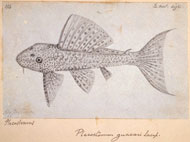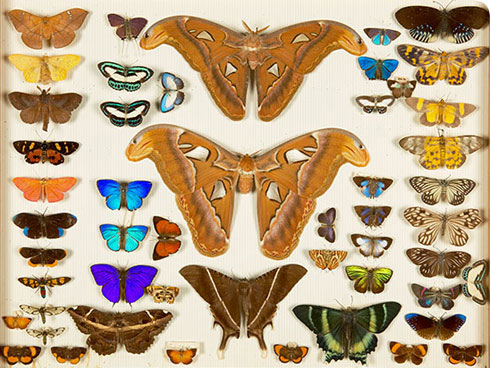Alfred Russel Wallace’s insects
On a monumental 8-year expedition to Southeast Asia, Alfred Russel Wallace developed the theory of evolution by natural selection independently of Charles Darwin and collected thousands of species new to science. He became one of the most famous and well-respected scientists of his time.

When the ship caught fire on Wallace's return journey from the Amazon, all he could save was a small box containing some of his drawings. This catfish was among them.
Early interest in nature
Wallace was forced to leave school aged 14 to earn his living. Working as a land surveyor in the English and Welsh countryside, he started to study the living things around him.
In 1848, Wallace set off to the Amazon to collect insects and birds to study. He funded his trip by selling duplicates to museums and wealthy collectors back home.
During his 4 year trip he collected thousands of amazing species. But on the journey home, disaster struck. The ship caught fire, destroying all the specimens he had on-board, plus his irreplaceable diaries and notes.
Malay Archipelago
Not losing heart, Wallace set off again in 1854 to the Malay Archipelago (now Singapore, Malaysia and Indonesia). He didn’t return home for 8 years! It was here that he conceived his ideas about how species evolve.
Bed bound by a bout of fever in 1858, Wallace thought about Thomas Malthus’ theory that human population growth will tend to outstrip food supply, leading to fierce competition for food resources. Only the best competitors would survive. Wondering if this could also be applied to animals, the theory of evolution by natural selection came to him in a flash.

Illustration 'A Malay Forest with Characteristic Birds' by JB Zwecker, from Wallace's 1876 book The Geographical Distribution of Animals.
Great minds think alike
Thrilled by his revelation, Wallace wrote to someone he knew would be interested, Charles Darwin. Incredibly, the same theory had occurred to Darwin 20 years earlier, he just hadn't published it yet.
Darwin and Wallace were given joint recognition for discovering the process of evolution by natural selection at a meeting of the Linnean Society in July 1858. Their documents were published together shortly after. Wallace only heard about this later as he was still in remote Indonesia.
Brilliant naturalist
Despite gaining fame for his evolution theory, Wallace has many achievements worth remembering, including founding the study of animal distribution, evolutionary biogeography.
Most famously, he noticed that birds on Bali in Indonesia were related to those on islands to the west, while birds on nearby Lombok were related to those to the east. This division between these 2 major zoogeographic regions became known as the Wallace Line.

Drawer of beetles pinned as Wallace arranged them.
Personal collection
Wallace's expedition to Southeast Asia yielded phenomenal collections as well as ground-breaking intellectual discoveries. As one of the first naturalists to extensively explore the islands, he found thousands of species new to science. He sold his extensive private collection in the late 1860s and early 1870s, keeping only a few to remind him of his epic travels.
In 2002, the Natural History Museum purchased Wallace’s small insect collection from his family. Specimens are still pinned as he originally arranged them in a series of drawers.
Further information
- Visit Wallace's insect specimens in our new Treasures Cadogan Gallery.
- Discover more about the life and scientific legacy of Wallace.
- Take a closer look at more of Wallace's prized insect specimens.
Vote for your favourite treasure
Is this your favourite Museum treasure? Let us know by voting in our poll.
